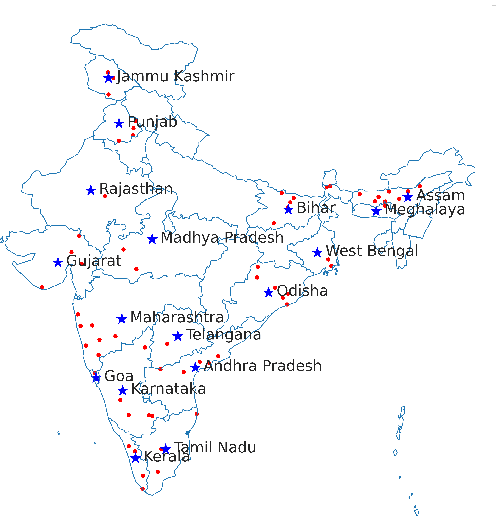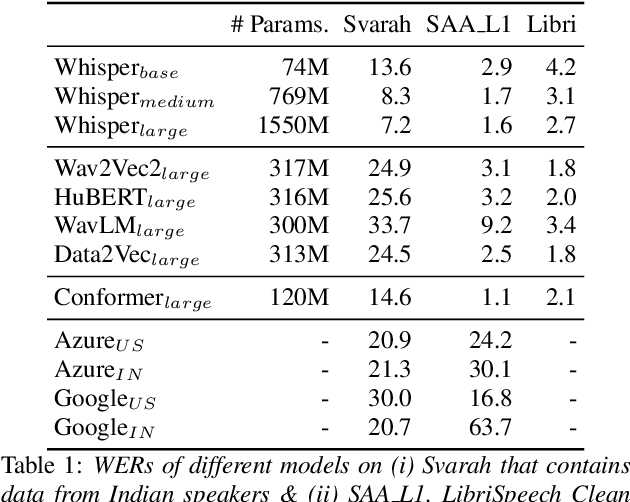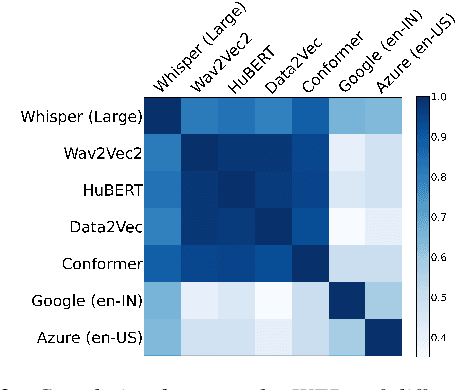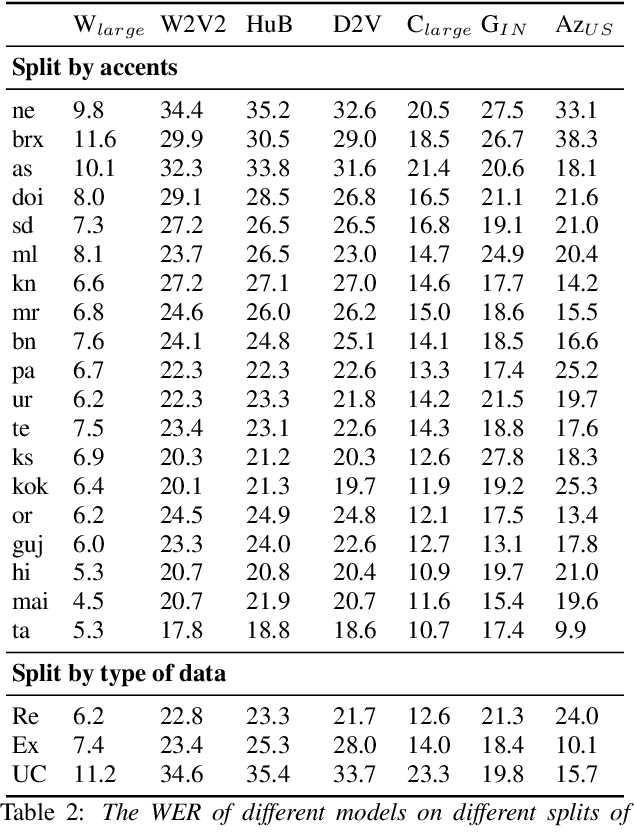Vignesh Nagarajan
Svarah: Evaluating English ASR Systems on Indian Accents
May 25, 2023



Abstract:India is the second largest English-speaking country in the world with a speaker base of roughly 130 million. Thus, it is imperative that automatic speech recognition (ASR) systems for English should be evaluated on Indian accents. Unfortunately, Indian speakers find a very poor representation in existing English ASR benchmarks such as LibriSpeech, Switchboard, Speech Accent Archive, etc. In this work, we address this gap by creating Svarah, a benchmark that contains 9.6 hours of transcribed English audio from 117 speakers across 65 geographic locations throughout India, resulting in a diverse range of accents. Svarah comprises both read speech and spontaneous conversational data, covering various domains, such as history, culture, tourism, etc., ensuring a diverse vocabulary. We evaluate 6 open source ASR models and 2 commercial ASR systems on Svarah and show that there is clear scope for improvement on Indian accents. Svarah as well as all our code will be publicly available.
IndicMT Eval: A Dataset to Meta-Evaluate Machine Translation metrics for Indian Languages
Dec 20, 2022Abstract:The rapid growth of machine translation (MT) systems has necessitated comprehensive studies to meta-evaluate evaluation metrics being used, which enables a better selection of metrics that best reflect MT quality. Unfortunately, most of the research focuses on high-resource languages, mainly English, the observations for which may not always apply to other languages. Indian languages, having over a billion speakers, are linguistically different from English, and to date, there has not been a systematic study of evaluating MT systems from English into Indian languages. In this paper, we fill this gap by creating an MQM dataset consisting of 7000 fine-grained annotations, spanning 5 Indian languages and 7 MT systems, and use it to establish correlations between annotator scores and scores obtained using existing automatic metrics. Our results show that pre-trained metrics, such as COMET, have the highest correlations with annotator scores. Additionally, we find that the metrics do not adequately capture fluency-based errors in Indian languages, and there is a need to develop metrics focused on Indian languages. We hope that our dataset and analysis will help promote further research in this area.
 Add to Chrome
Add to Chrome Add to Firefox
Add to Firefox Add to Edge
Add to Edge